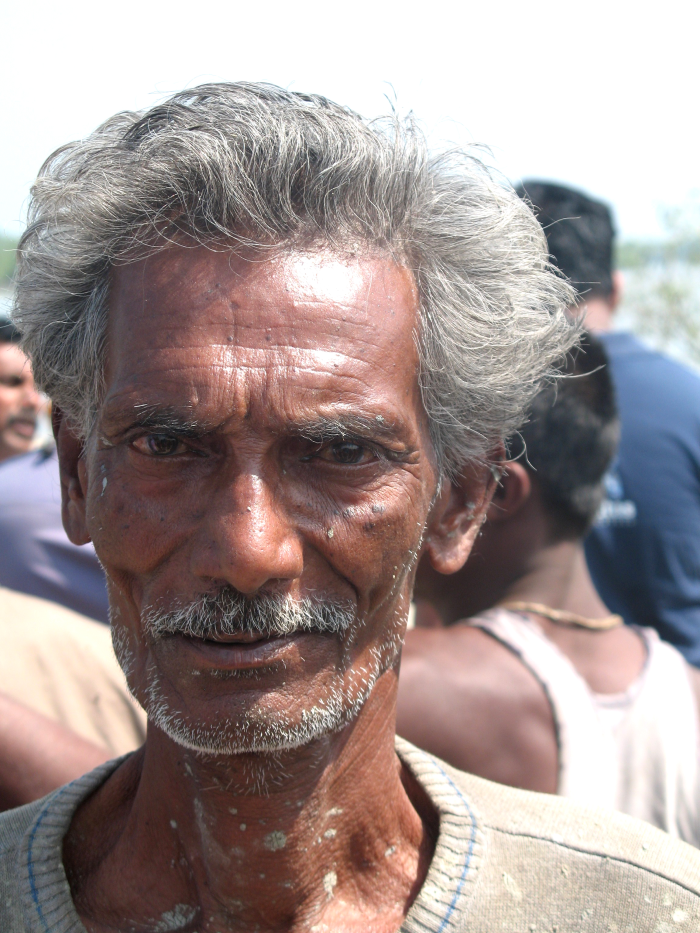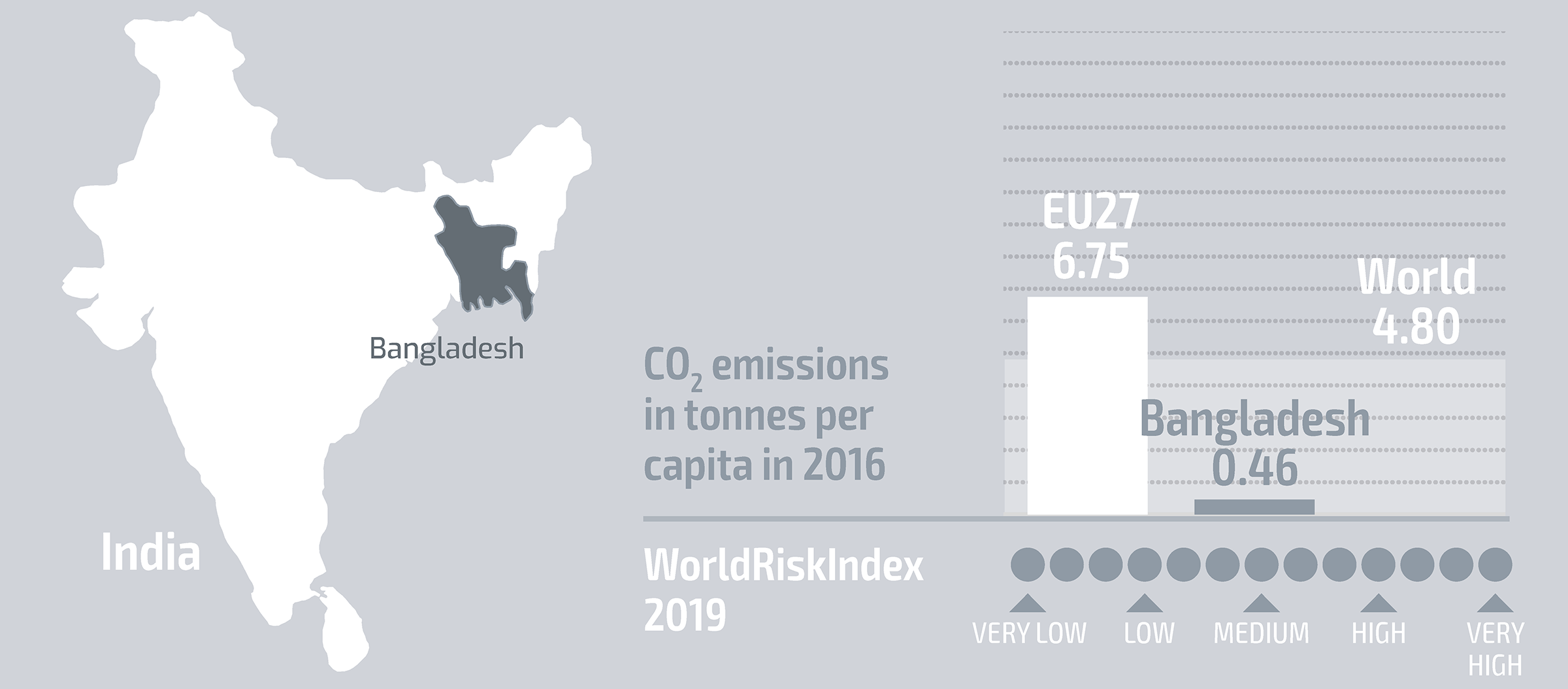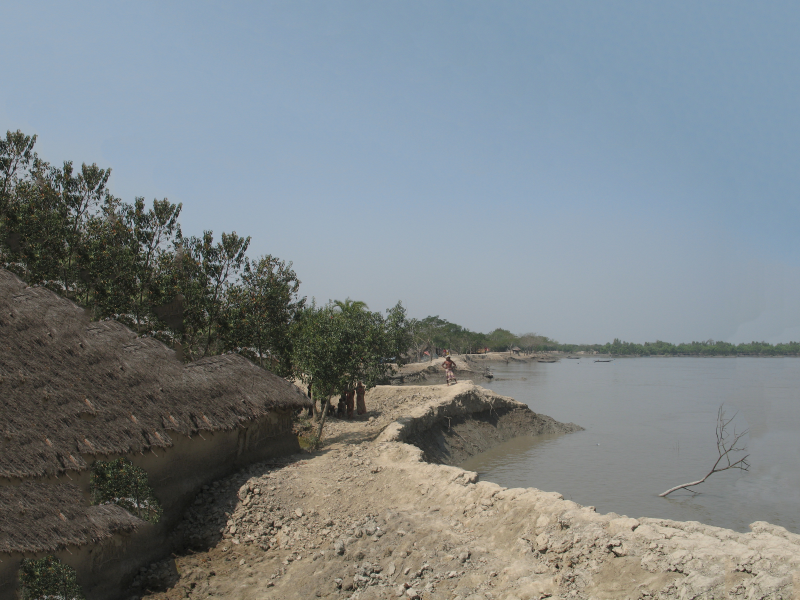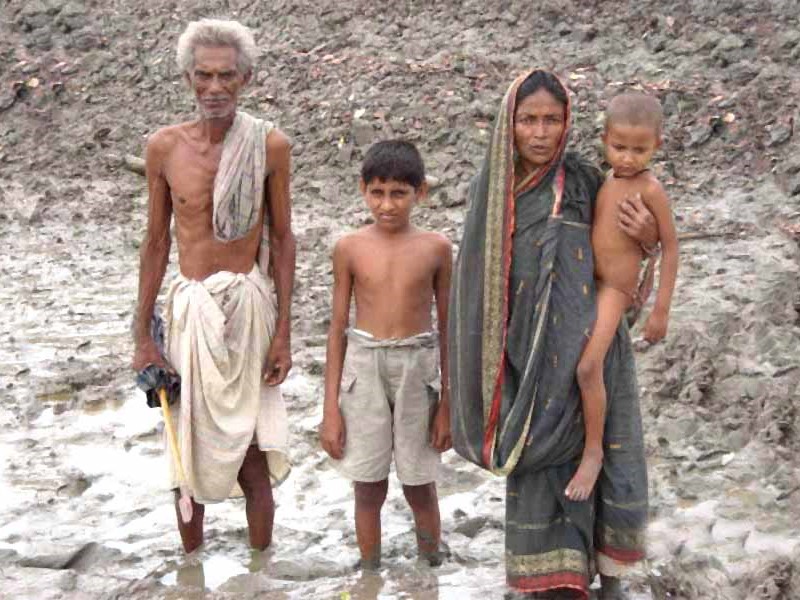Rising sea level and cyclones
The Mondol family in Shingertoly after cyclone Aila.
© Dietmar Mirkes

“My name is Shadu Charan Mondol. I am 72 years old and I live in Shingertoly on the banks of the River Malancha in Bangladesh. My house is built on a dyke (on the left in the photo here). It has already been destroyed six times because the dyke didn’t hold. At high tide, the sea pushes further and further upstream. The water level began rising 60 years ago, but in the last ten years it has risen faster. The spring tides in June and July are even more dangerous: they cause the highest water levels. We have already been forced to rebuild the dyke farther away from the river many times, but this is an ongoing problem and there is no space left for us to move any further.” (March 2009)
Scientific Background: Rising sea levels …
Due to its geographical location, the global rise in the sea level affects Bangladesh far more than the global average: Based on data from the past 22 years, the Bengal SAARC Meteorological Research Council discovered that the sea level rises around 3–6 mm per year. Large swathes of Bangladesh lie less than 2 m above sea level and the sea can reach far inland along the country’s rivers. The rise in the sea level thus leads to salinisation of the groundwater in coastal areas and low-lying areas close to the rivers.
… And ever-more violent cyclones
The storm surges costing the greatest loss of life in the twentieth century worldwide have occurred in the Bay of Bengal along the coasts of India, Bangladesh and Burma, where tropical cyclones cause extremely high water levels: Sidr in 2015, Nargis in 2017 and Aila in 2020 killed several hundred thousand people (the storms themselves and the accompanying storm surges). The frequency of violent cyclones in the Bay of Bengal and their intensity near the end of the monsoon season until November continues to rise.


